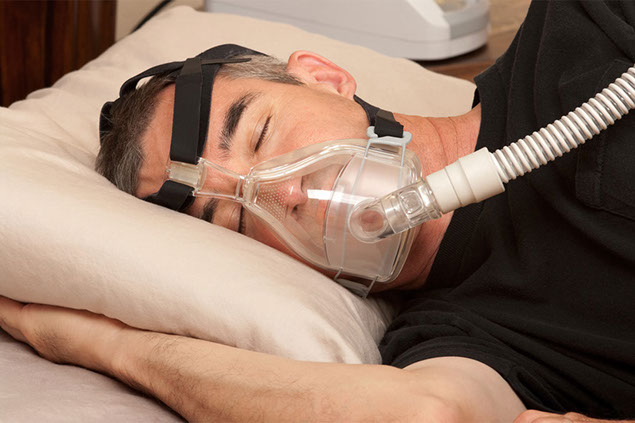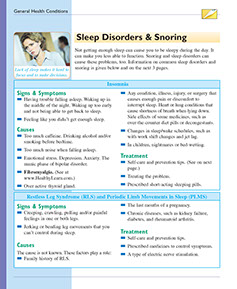CONDITIONS
SYMPTOM CHECKER
Male
Female
Child
Arm, Hand & Shoulder Concerns
Legs & Feet Concerns
Dental & Mouth Concerns
Ear & Nose
Eye Conditions
Head Conditions
Arm, Hand & Shoulder Concerns
Legs & Feet Concerns
Front
Back
Arm, Hand & Shoulder Concerns
Dental & Mouth Concerns
Ear & Nose
Eye Conditions
Head Conditions
Arm, Hand & Shoulder Concerns
Dental & Mouth Concerns
Ear & Nose
Eye Conditions
Head Conditions
Front
Back
Arm, Hand & Shoulder Concerns
Neck Links
Head & Neck Concerns
Arm, Hand & Shoulder Concerns
Neck Links
Head & Neck Concerns
Front
Back
Online Clinic
Wise Healthcare
Sleep Disorders & Snoring
Not getting enough sleep can cause you to be sleepy during the day. It can make you less able to function. Snoring and sleep disorders can cause these problems, too.
Insomnia
How Much Sleep is Needed?
Diabetes
Insomnia
Signs & Symptoms
• Having trouble falling asleep. Waking up in the middle of the night. Waking up too early and not being able to get back to sleep.
• Feeling like you didn’t get enough sleep.
Causes
• Too much caffeine. Drinking alcohol and/or smoking before bedtime.
• Too much noise when falling asleep.
• Emotional stress. Depression. Anxiety. The manic phase of bipolar disorder.
• Fibromyalgia.
• Over active thyroid gland.
• Any condition, illness, injury, or surgery that causes enough pain or discomfort to interrupt sleep. Heart or lung conditions that cause shortness of breath when lying down. Side effects of some medicines, such as over-the-counter diet pills or decongestants.
• Changes in sleep/wake schedules, such as with work shift changes and jet lag.
• In children, nightmares or bed-wetting.
Resources
National Center on Sleep Disorders Research (NCSDR)
301.435.0199
National Sleep Foundation
703.243.1697
Treatment
• Self-care and prevention tips.
• Treating the problem.
• Prescribed short-acting sleeping pills.
Self-Care / Prevention
• Avoid caffeine for 8 hours before bedtime.
• Avoid long naps during the day.
• Have no more than 1 alcoholic drink with or after dinner.
• Avoid using electronic devices, such as a laptop computer before falling asleep and in the middle of the night. The type of light that emits from these devices makes it hard to fall asleep.
• Avoid nicotine. Don’t smoke. Stay away from secondhand smoke.
• Get regular exercise, but not within a few hours of going to bed.
• Before bedtime, take a warm bath or read a book, etc. Avoid things that hold your attention, such as watching a suspense movie.
• Keep your bedroom quiet, dark, and comfortable.
• Follow a bedtime routine. Lock or check doors and windows, brush your teeth, etc.
• Count sheep! Picture a repeated image. Doing this may bore you to sleep.
• Listen to recordings that help promote sleep.
• Take over-the- counter sleep aids, (e.g., melatonin, Tylenol PM, etc.) as advised by your doctor. Don’t take anyone else’s sleeping pills.
• If you wake up and can’t get back to sleep or can’t fall asleep, after 30 minutes, get out of bed. Read a relaxing book or sit quietly in the dark. In about 20 minutes, go back to bed. Do this as many times as needed.
Restless Leg Syndrome (RLS) and Periodic Limb Movements in Sleep (PLMS)
Signs & Symptoms
• Creeping, crawling, pulling and/or painful feelings in one or both legs.
• Jerking or bending leg movements that you can’t control during sleep.
Causes
The cause is not known. These factors play a role:
• Family history of RLS.
• The last months of a pregnancy.
• Chronic diseases, such as kidney failure, diabetes, and rheumatoid arthritis.
Treatment
• Self-care and prevention tips.
• Prescribed medicines to control symptoms.
• A type of electric nerve stimulation.
Self-Care / Prevention
• Take medications as prescribed. Let your doctor know if the medicine no longer helps.
• For relief, move the legs. Walk, rub, or massage them or do knee bends.
• Limit or avoid caffeine.
• Take a warm bath before bedtime.
Sleep Apnea
Signs & Symptoms
• Loud snoring and snorting sounds while sleeping on the back.
• Repeated periods when breathing stops 10 or more seconds during sleep.
• Waking up many times during the night. Excessive daytime sleepiness.
• Exhaustion. Hard time concentrating. Acting very cranky. Depression or other mental changes.
• Early morning headaches.
Causes
• Too much muscle tissue is in the airway or the tissue relaxes and sags. These things narrow or block the airway. Persons who snore loudly and are overweight are more prone to these problems.
• A physical problem in the nose or upper airway.
Treatment
The goal is to keep the airway open during sleep. This is done with self-care measures and one of these treatments:
• A mouth guard dental device custom made by a dentist. This is worn during sleep. It pushes the lower jaw forward to open the air passage behind the tongue.
• A nasal continuous positive airway pressure (CPAP) device. Pressure from an air blower forces air through the nasal passages using a mask worn over the nose during sleep.
• Surgery to correct the cause of the airway obstruction.
Self-Care / Prevention
• Lose weight, if you are overweight.
• Don’t drink alcohol. Don’t use tobacco products.
• Don’t take sleeping pills or sedatives.
• Use methods, such as those listed under Self-Care / Prevention – For Snoring to keep from sleeping on your back.
Snoring
Signs & Symptoms
• Loud sounds. Harsh breathing. Snorting sounds. These occur during sleep.
Causes
• Sleeping on the back. The tongue falls back toward the throat and partly closes the airway.
• Nasal congestion from allergies or colds. Smoking. Drinking alcohol. Taking sedatives. Overeating (especially before bedtime).
• Sleep apnea or chronic respiratory disease.
• An obstructed airway. This can be due to enlarged tonsils or being overweight.
• Changes in hormones, such as during menopause or the last month of pregnancy.
Treatment
Self-care treats most cases. Other options are:
• Wearing a dental device that holds the jaw in a forward position.
• Surgery, if needed, to correct the problem.
• Treatment for sleep apnea, if needed.
Self-Care / Prevention
• Sleep on your side. Prop an extra pillow behind your back so you won’t roll over. Sleep on a narrow sofa for a few nights to get used to staying on your side.
• Sew a large marble or tennis ball into a pocket on the back of your pajamas. This can help you stay on your side when you sleep.
• If you must sleep on your back, raise the head of the bed 6 inches on bricks or blocks. Or buy a wedge that is made to be placed between the mattress and box spring to elevate the head section.
• Lose weight, if you are overweight. Excess fatty tissue in the throat can cause snoring. Losing 10% of your body weight will help.
• Don’t smoke. If you do, quit. Limit or don’t have alcohol, sedatives, or a heavy meal within 3 hours of bedtime.
• To relieve nasal congestion, try a decongestant before you go to bed.
• Get rid of allergens in the bedroom. These include dust, down-filled (feathered) pillows, and down-filled bed linen.
• Try over-the-counter “nasal strips.” These keep the nostrils open and lift them up. This helps lessen congestion in nasal passages.
Questions to Ask
Question 1
Do signs and symptoms of sleep apnea occur?
You should be seen by your doctor for medical advice. Contact your doctor or health care provider to find out how soon you should be seen.
Question 2
Are any of these conditions present?
• Trouble falling or staying asleep due to pain from an illness or injury or the need to wake up often to use the bathroom.
• Disturbed sleep since taking medication. Or, side effects from taking prescribed sleeping pills. Examples are feeling dizzy or confused or hallucinating.
• Trouble sleeping after 3 weeks.
Call your doctor or health care provider and state the problem. He or she can decide what you should do.
Question 3
Do any of these problems occur?
• Snoring keeps you or your sleep partner from getting enough, restful sleep.
• Snoring persists despite using self-care measures.
• You think you’re getting enough sleep, but still feel sleepy during the day.
Call your doctor or health care provider and state the problem. He or she can decide what you should do.
Use Self-Care / Prevention:
You can probably take care of the problem yourself if you answered NO to all the questions. Use the “Self-Care” measures that are listed. Call your doctor if you don’t feel better soon, though. You may have some other problem.
This website is not meant to substitute for expert medical advice or treatment. Follow your doctor’s or health care provider’s advice if it differs from what is given in this guide.
The American Institute for Preventive Medicine (AIPM) is not responsible for the availability or content of external sites, nor does AIPM endorse them. Also, it is the responsibility of the user to examine the copyright and licensing restrictions of external pages and to secure all necessary permission.
The content on this website is proprietary. You may not modify, copy, reproduce, republish, upload, post, transmit, or distribute, in any manner, the material on the website without the written permission of AIPM.
2021 © American Institute for Preventive Medicine - All Rights Reserved. Disclaimer | www.HealthyLife.com

















































